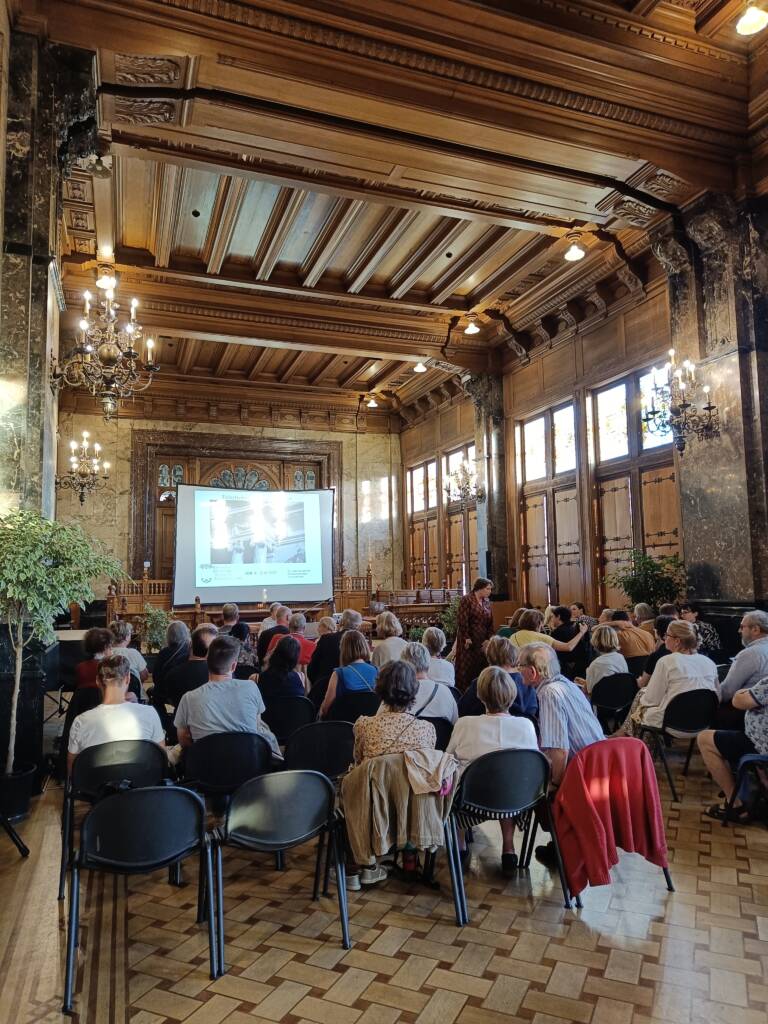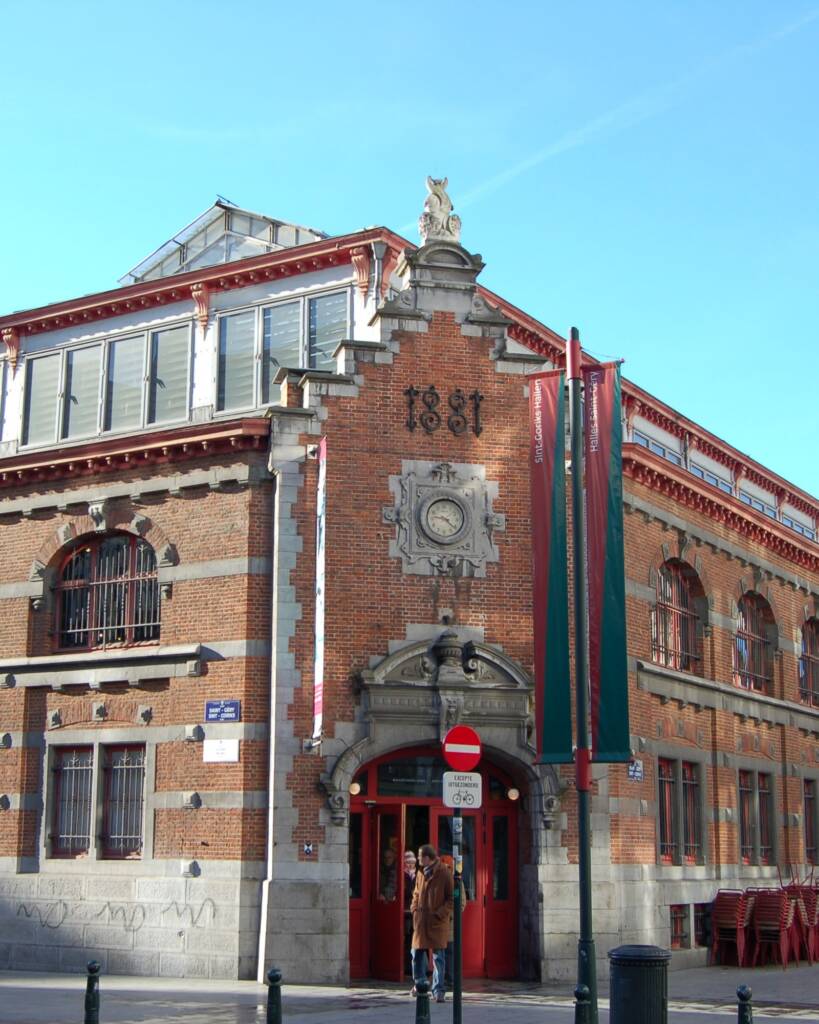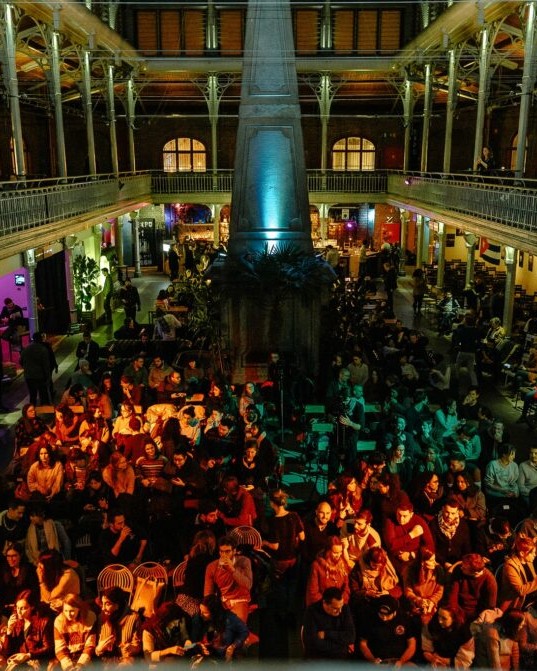Le Long XIXe, creuset de la modernité par Thomas Greck

© EXPLORE BRUSSELS – Amaury De Smet
Mardi 14 octobre à 19h00
Infos pratiques
Durée : 1h30 – Ouverture des portes à 18h30 – Début de la conférence à 19h
La conférence sera suivie d’un drink.
Prix : Gratuit.
Langue : français
Réservation : Cliquer ici.
Adresse : Salle du Musée de l’Hôtel Communal – Place Colignon -1030 Schaerbeek
Transport : Tram 55 (Pavillon/Paviljoen), Tram 92 (Pogge), Bus 56 (Colignon), Bus 58 (Pavillon/Paviljoen), Bus 59 (Pavillon/Paviljoen)
Longtemps réduit à une simple forme d’« historicisme », voire à un pastiche, le patrimoine architectural du XIXe siècle mérite d’être reconsidéré à la lumière de l’évolution du bâti en Belgique, où l’« éclectisme » joue un rôle déterminant dans la transition vers la modernité. Amorcé à la fin du XVIIIe siècle et pleinement développé après 1830, ce courant se distingue par une réinterprétation inventive des styles anciens, que les architectes associaient avec une remarquable liberté. Cette démarche a donné naissance à une production foisonnante, marquée par une pluralité d’influences, qui dépasse largement la simple copie du passé pour ouvrir la voie à un langage architectural plus novateur.
Ce « long XIXe siècle » fut également l’occasion d’introduire des avancées notables dans la conception des édifices civils, au travers notamment d’une réflexion sur les plans, intégrant des espaces mieux adaptés aux nouveaux modes de vie urbains. Le recours à des matériaux tels que le fer, la fonte ou le verre, combiné à une attention nouvelle portée au confort, annonçait déjà les expérimentations de l’Art nouveau. Ainsi, la richesse créative de cette période doit être envisagée comme un véritable laboratoire d’idées, prélude à une modernité architecturale affirmée.
Thomas Greck, architecte spécialisé en patrimoine, poursuit une étude approfondie du mouvement néogothique en Belgique, de 1780 à 1935. Il est le coauteur d’une étude architecturale sur le Palais de Justice de Bruxelles menée en 2019-2022 avec Thierry Henrard, architecte.
De Brusselse bouwwerven van de 19e eeuw in beeld, lezing door Inge Bertels

Tourisme Monuments et Sites Halles Saint-Géry Sint Goriks Hallen © Olivier van de Kerchove
Donderdag 16 oktober om 18.30 uur
Praktische informatie
Duur : 1u
Prijs : Gratis
Taal : Nederlands
Reservatie : info@explore.brussels
Adres : Sint-Gorikshallen – Sint-Goriksplein, 1000 Brussel
Openbaar vervoer : Tram 4, 10 (Bourse), Bus 33 (Saint-Géry), Bus 46, 89, 95 (Bourse)
Relatief snel na de uitvinding van de fotografie begonnen verschillende architecten, ingenieurs, aannemers, opdrachtgevers of eenvoudigweg fotografen met een voorliefde voor de stad en haar architectuur de bouw- of restauratieprojecten van hun tijd te documenteren. Op die manier is er ook van de 19e-eeuwse Brusselse bouwwerven best wat interessant beeldmateriaal bewaard gebleven, beeldmateriaal dat ons bijzonder waardevolle historische inzichten oplevert over de veranderende bouwpraktijken van de 19e eeuw.
Aan de hand van tal van foto’s, gaande van de restauratie van het Brusselse stadhuis over de overwelving van de Zenne tot de bouw van prestigieuze projecten als de Beurs, het Justitiepaleis of de Serres van Laken, laat architectuurhistoricus Inge Bertels zien welke impact de Brusselse bouwprojecten hadden op het stedelijke weefsel, hoe ze de ambities van de stad en (een deel van) haar bewoners reflecteerden en hoe gaandeweg de rollen van de bouwactoren, de bouwinstrumenten en -machines, en de veiligheidspraktijken evolueerden in de tijd.
Inge Bertels (°1976) is gewoon hoogleraar architectuurgeschiedenis en bouwcultuur aan de Universiteit Antwerpen en sinds 2021 decaan van de faculteit Ontwerpwetenschappen. Haar expertise omvat negentiende- en twintigste-eeuwse bouw-, architectuur- en stadsgeschiedenis.
Architecture as an expression of power, lecture by Manuel Schmitz

Halles Saint-Géry Sint-Goriks Hallens © hallessaintgery.be
Thursday 16 October at 8.00 pm
Practical info
Duration : 1 hour
Prices : Free of charge
Language : English
Reservation : info@explore.brussels
Address : Halles Saint-Géry / Sint-Gorikshallen – Place Saint-Géry / Sint-Goriksplein, 1000 Brussels
Transport : Tram 4, 10 (Bourse/Beurs), Bus 33 (Saint-Géry/Sint-Gorik), Bus 46, 89, 95 (Bourse/Beurs)
Power and Architecture: The case of Brussels in the long 19 th century
By Manuel Schmitz
Architecture reflects power: the powerless are homeless, the powerful reside in palaces. Of course, power is not the only message that architecture can convey. Architecture can celebrate beauty or praise efficiency. It can embody rationality or faith, belief in the past or hope for the future. Architecture can sing of high ideals or shout about greedy needs. But architecture can never be quite about power. Buildings are symbols of power. Every building is.
In his lecture, Manuel Schmitz will look at the case of Brussels in the long 19th century (1780-1920), with a focus on political rather than cultural or economic power. This focus does not imply an exclusive discussion of political architecture; domestic architecture, for instance, can also reflect underlying political structures. The lecture will consider the extent to which the establishment of the Belgian nation-state in 1830–31 represented a watershed moment in Brussels’ building practices. Did becoming a capital make a substantial difference for the architecture of the city? Or are the continuities more prevalent? Is architecture a capital question?
Manuel Schmitz, PhD, is a political scientist, author and guide, living and working in Brussels.
